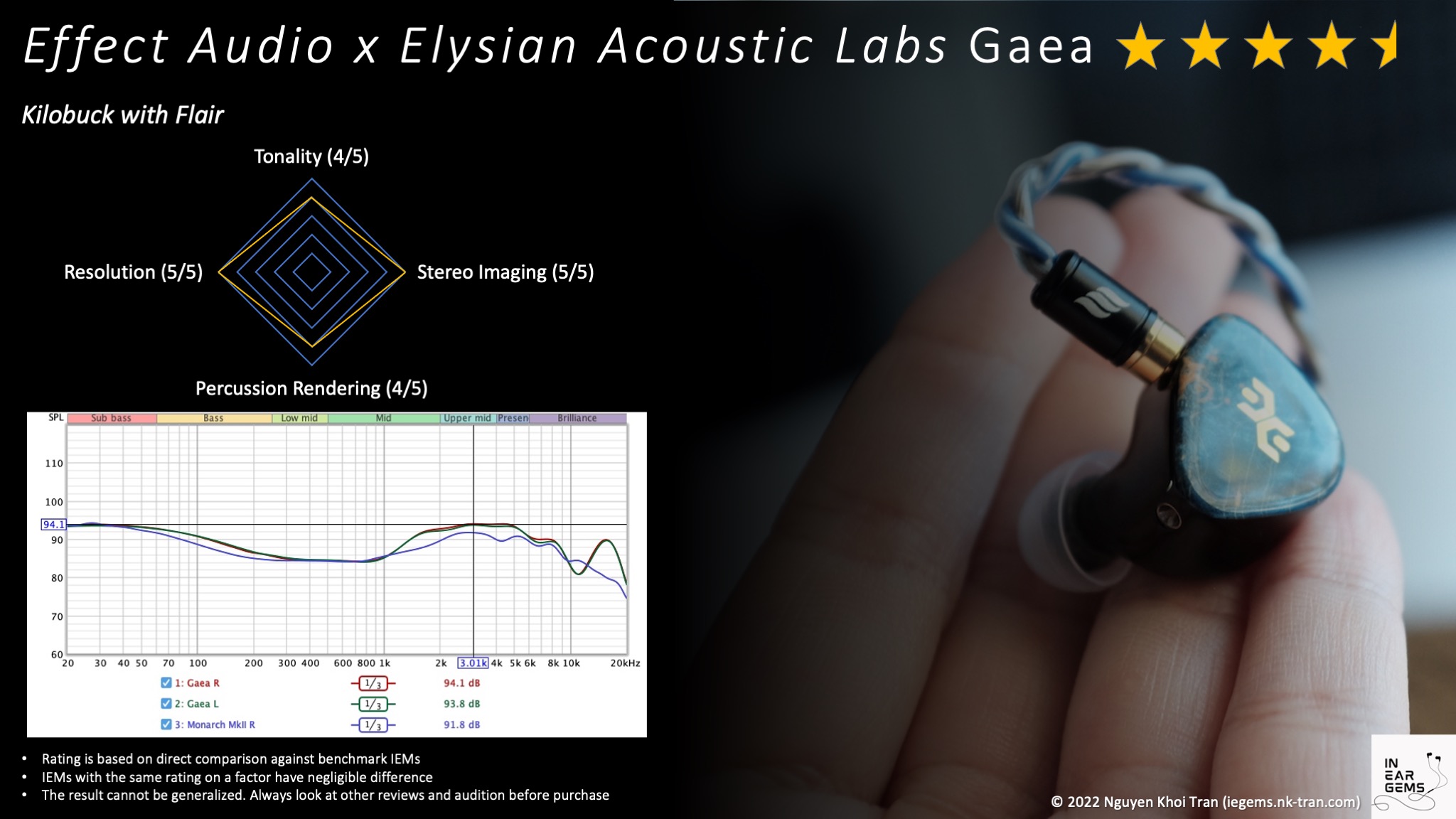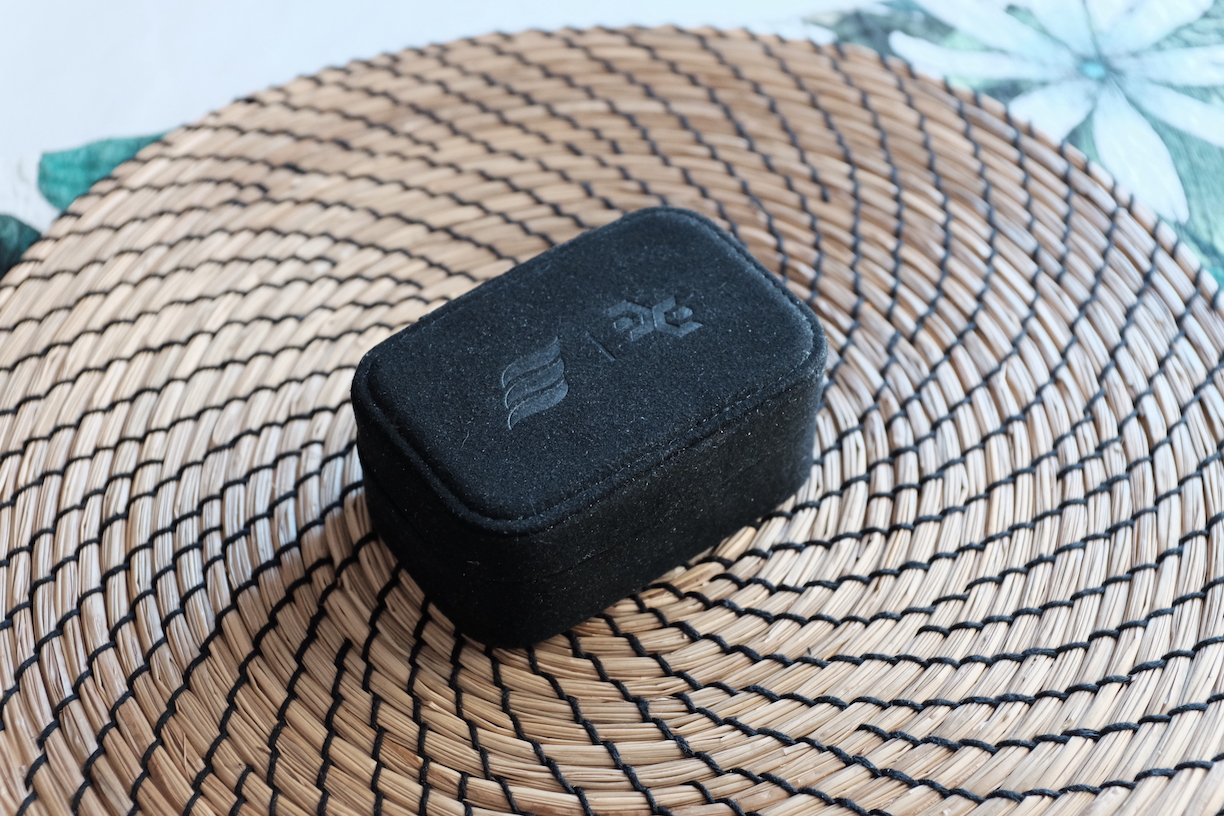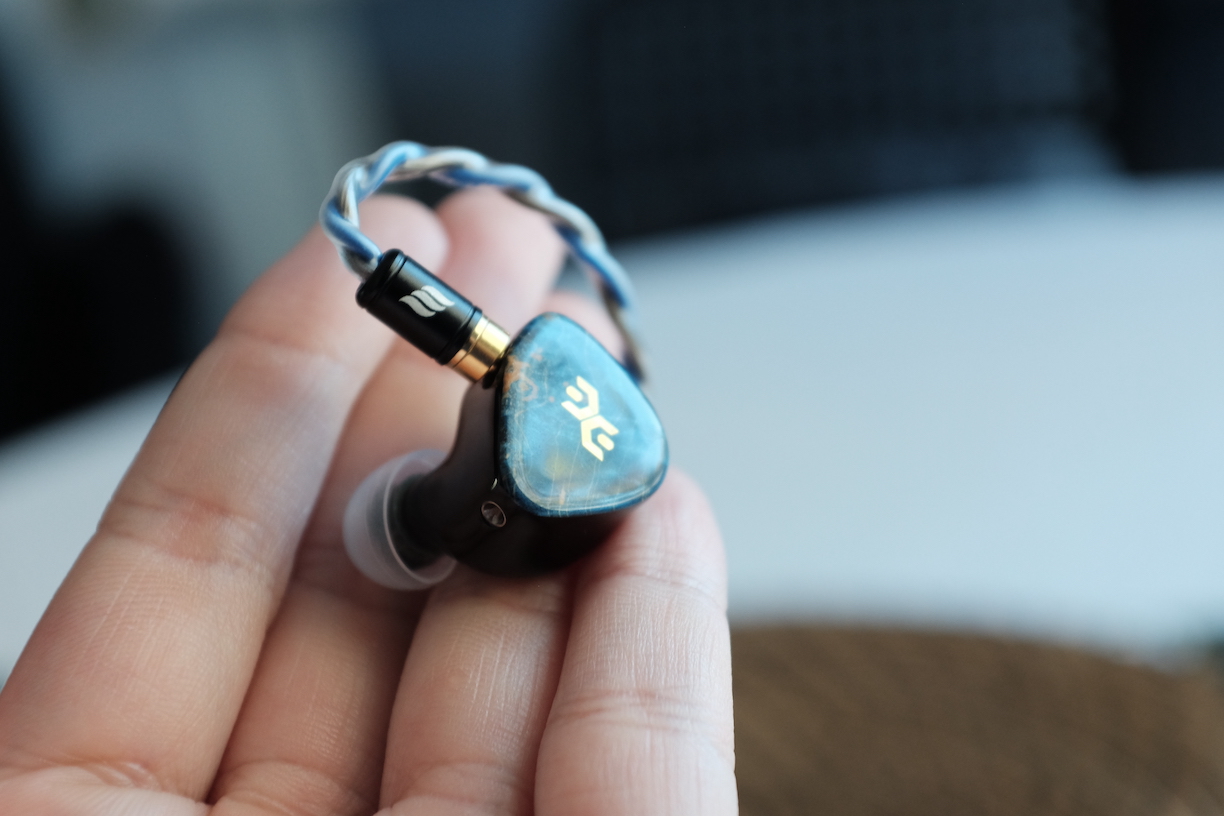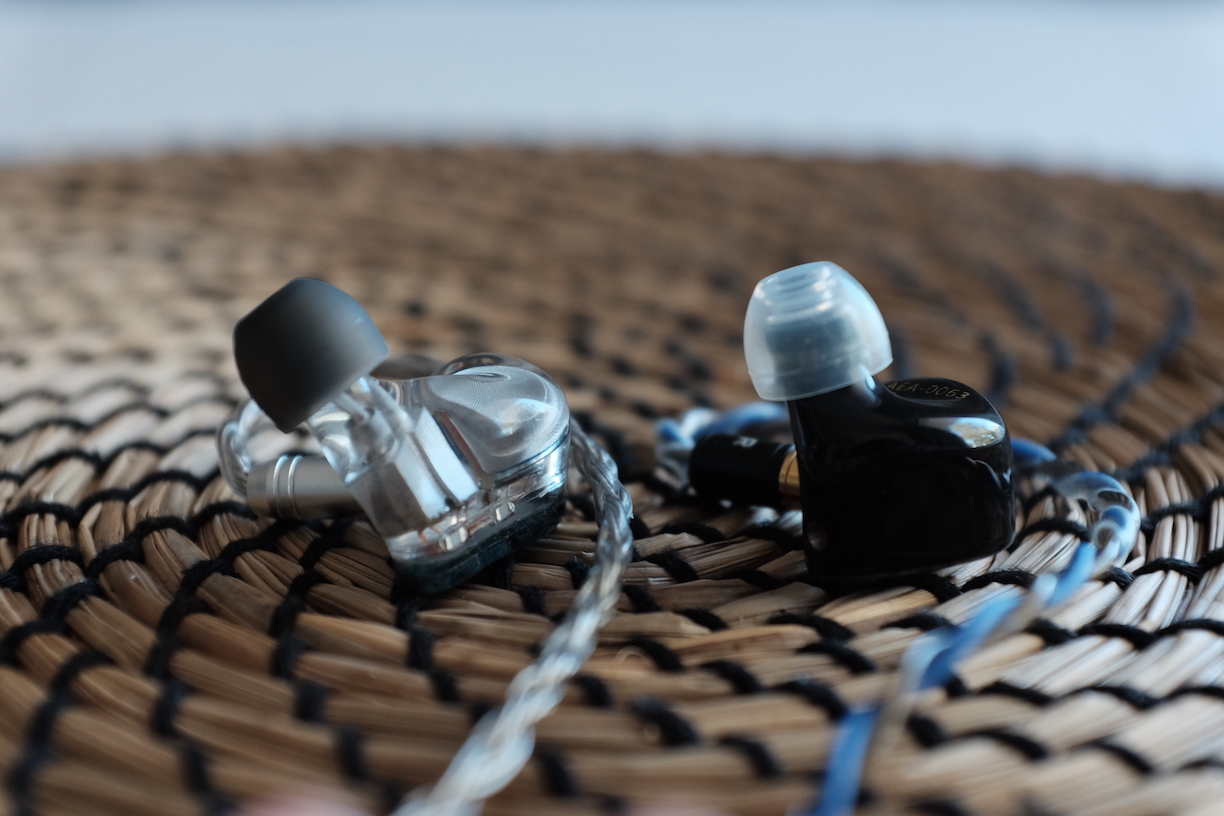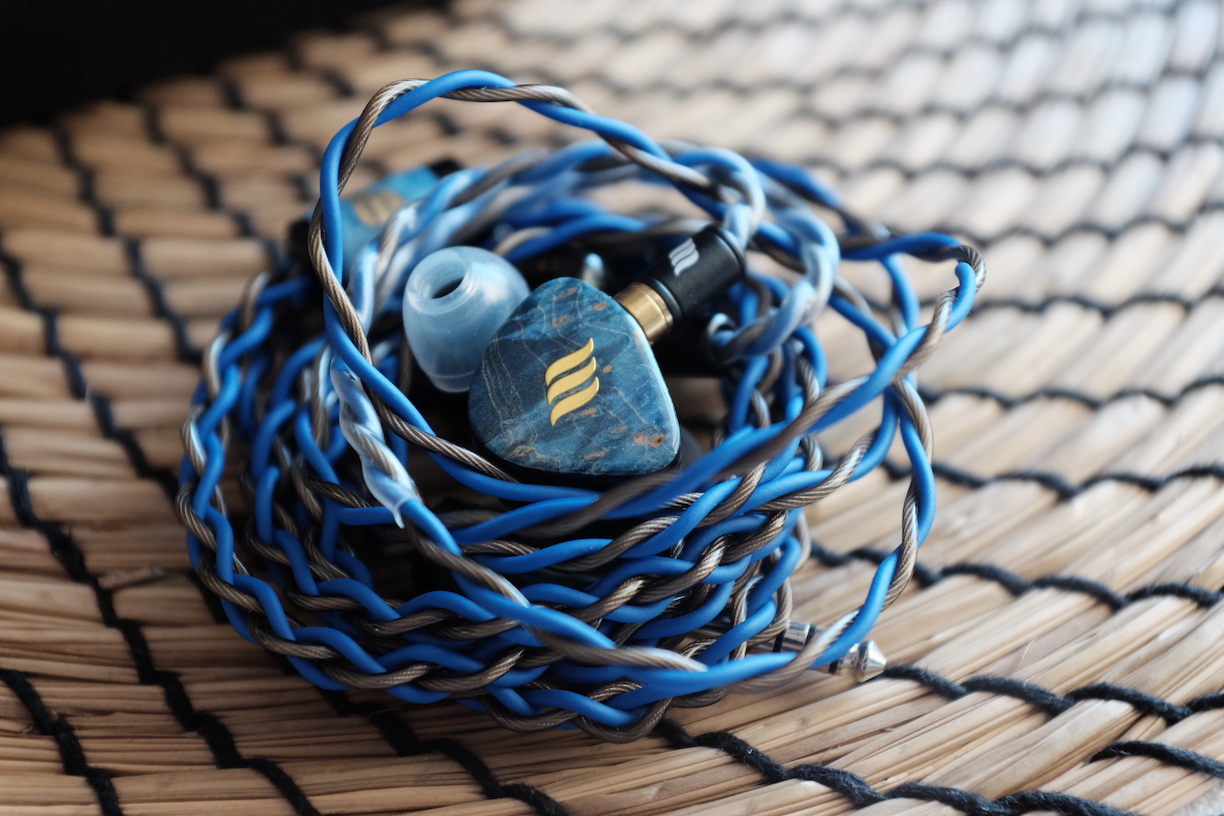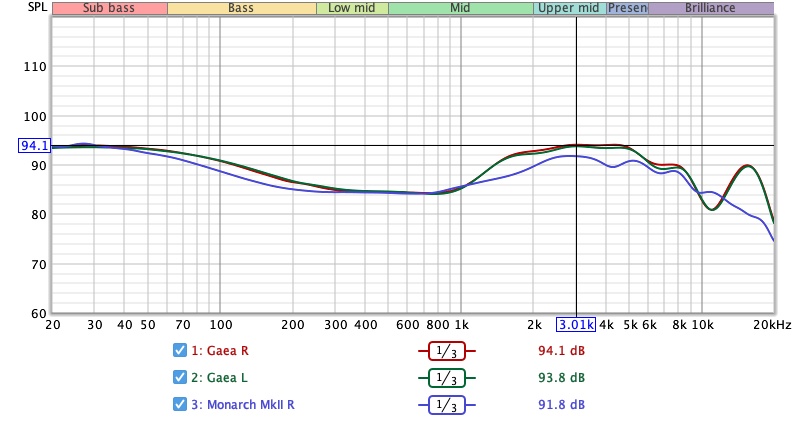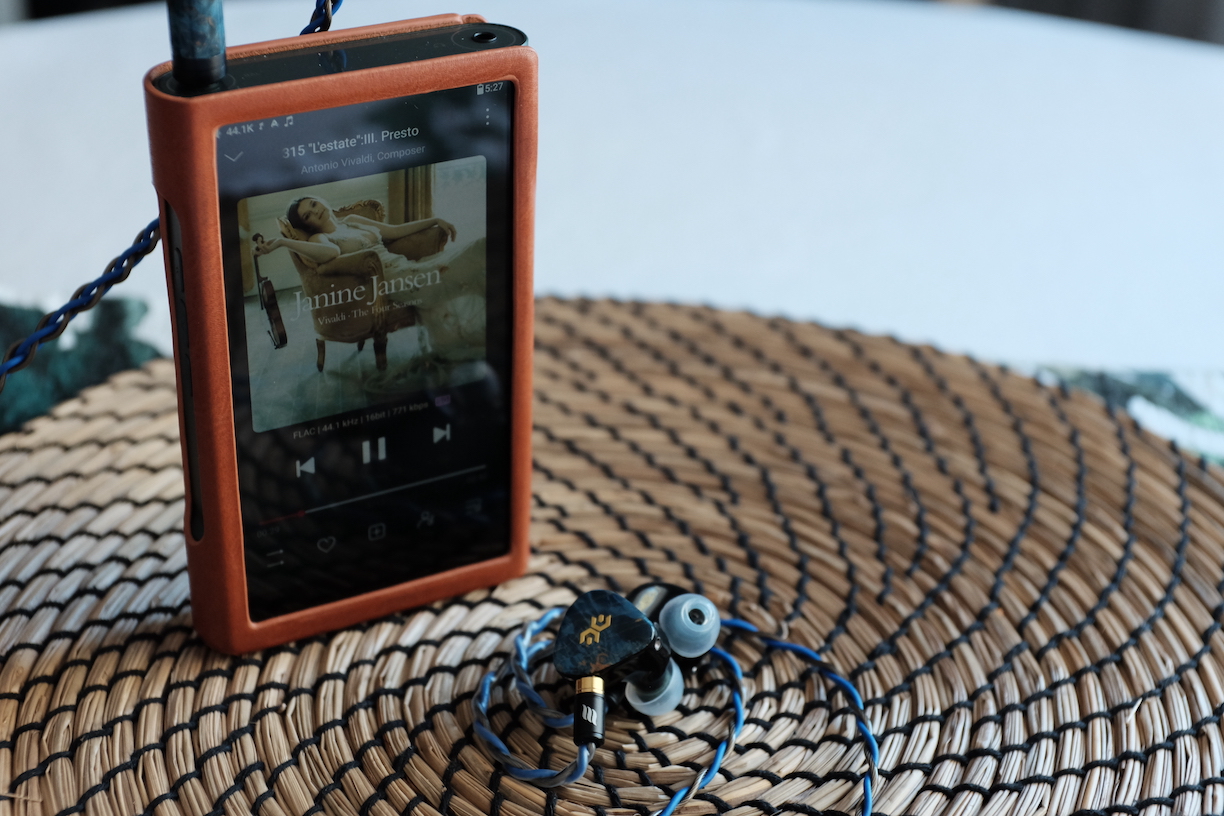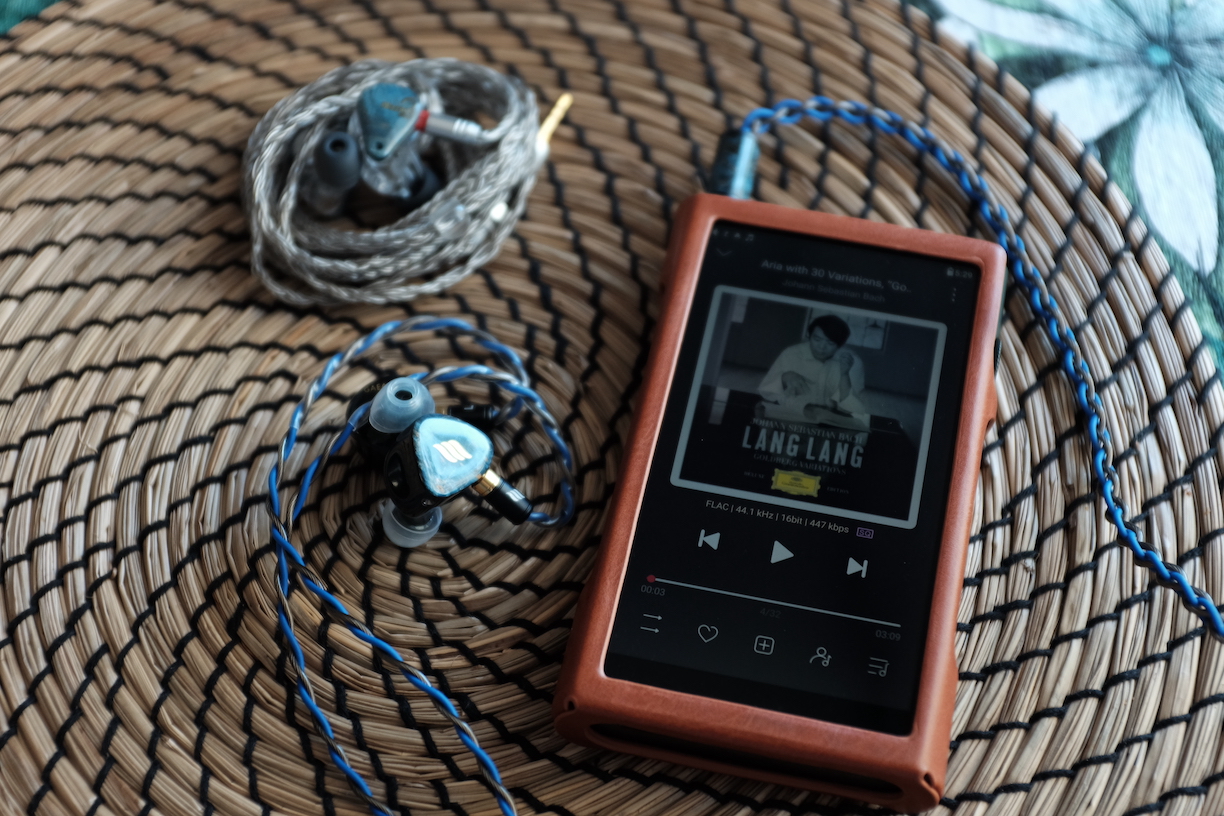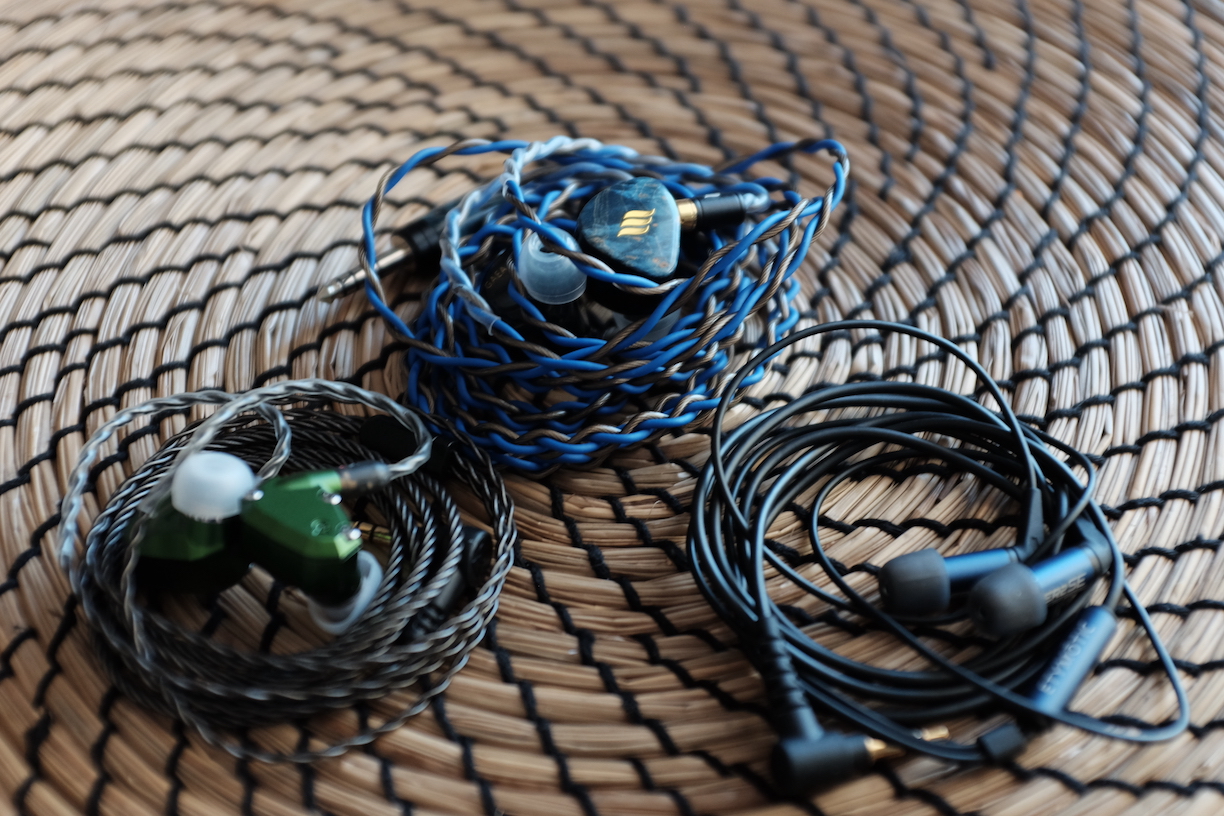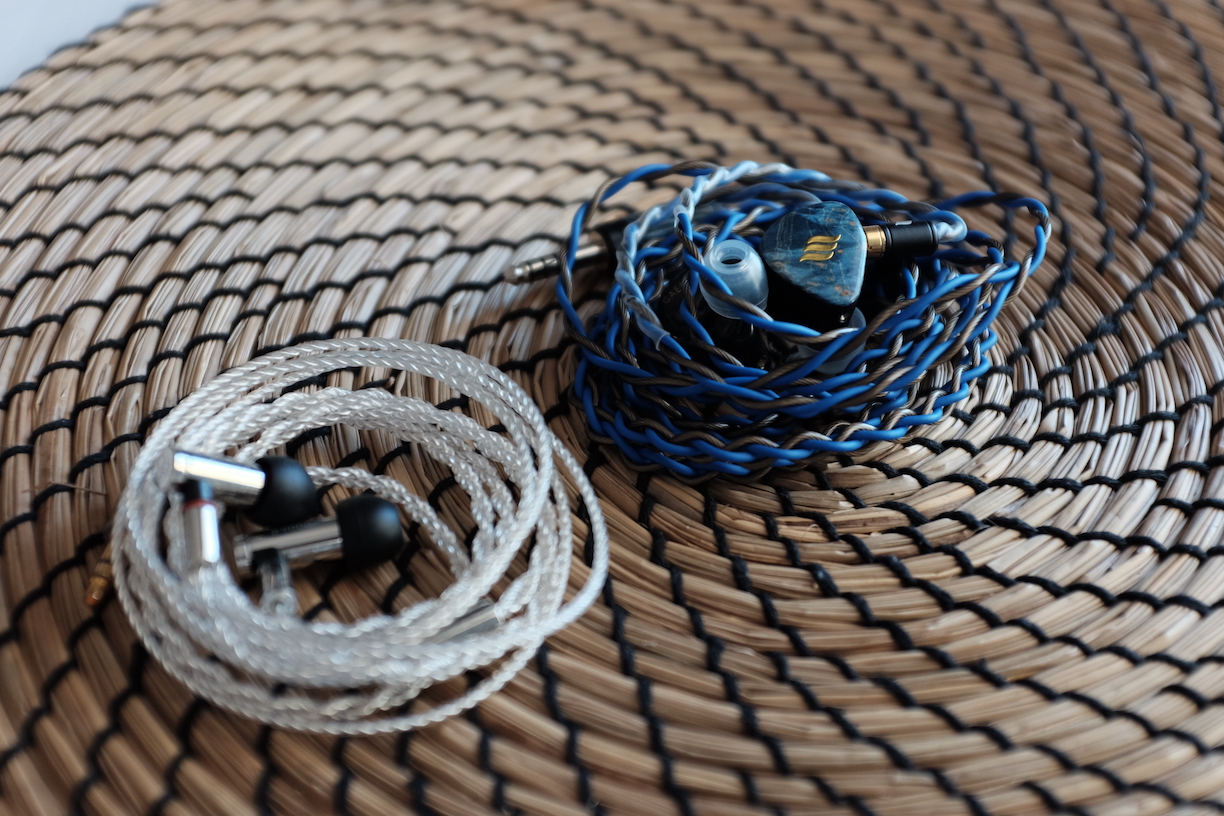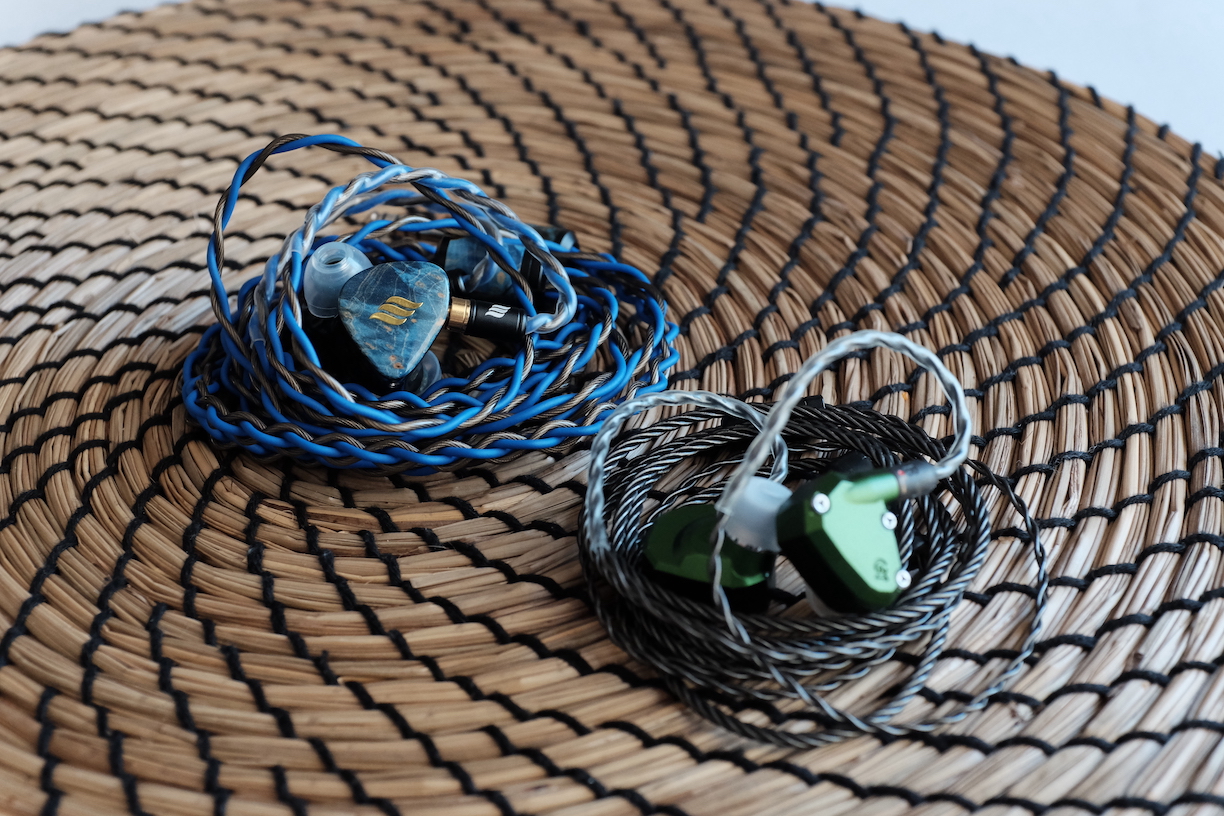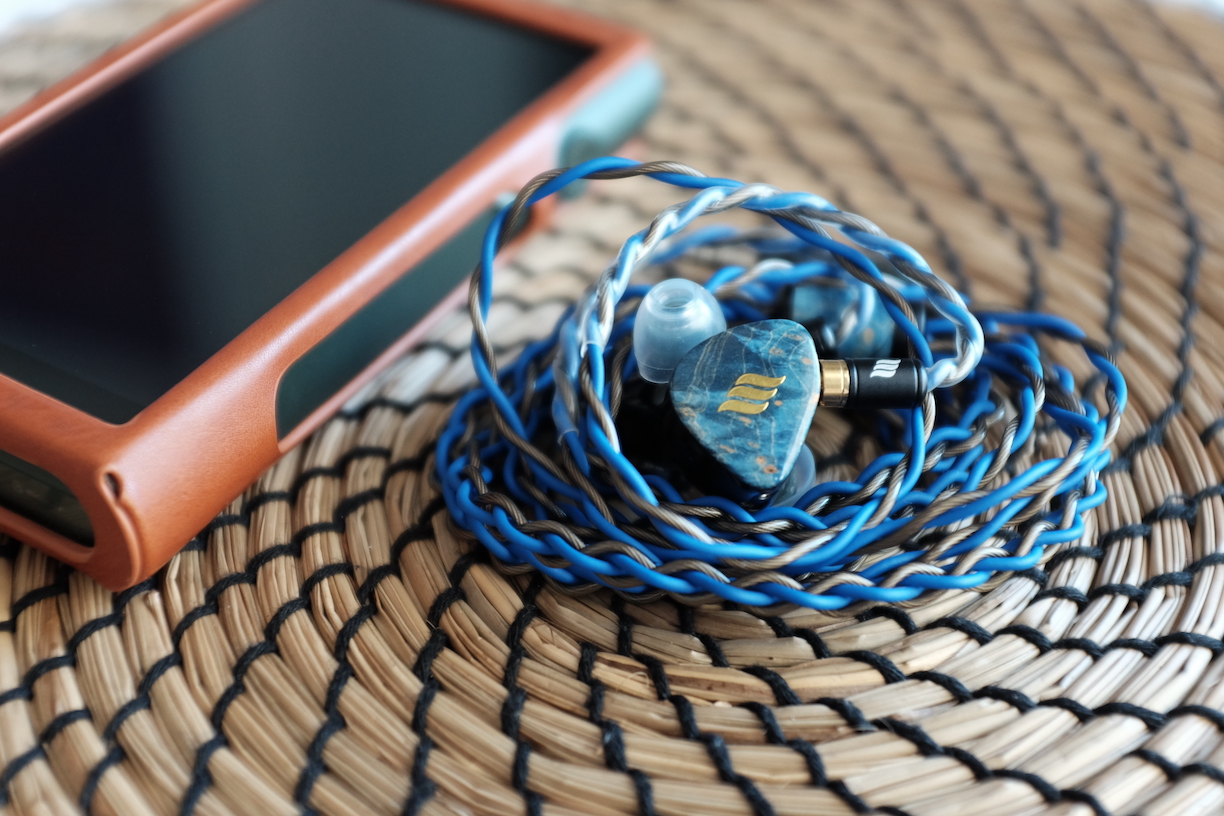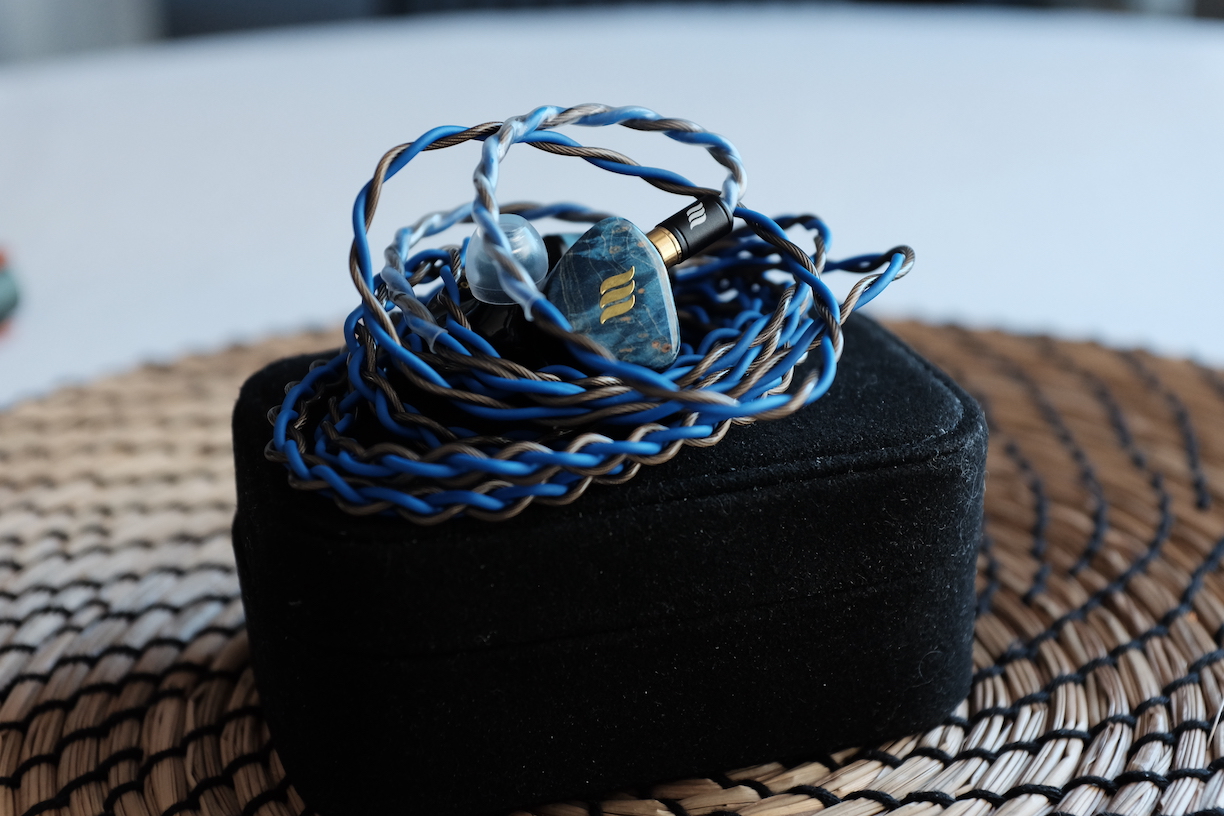EAxEA Gaea - Kilobuck with flair
What happens when a boutique cable maker collaborates with a boutique IEM maker? Let’s discuss Effect Audio x Elysian Acoustic Labs Gaea.
Forewords
- This review is possible thanks to the Australian Head-Fi Tour arranged by @Damz87 and @JordonEA. The sample of Gaea will be sent to the next reviewer in the tour after this review. Gaea retails for USD $1299 on Effect Audio website
- The Monarch MkII and U12T used in the comparison were demo units from Addicted to Audio Adelaide. Check them out if you are in town. Nice products and friendly people.
- You should treat this review as subjective impressions of an audio geek rather than an “objective truth” about the IEM. Your experience with any IEM would change depending on your DAC/AMP, music library, ear tips, and listening volume.
- I believe that great IEMs are the ones that can achieve multiple difficult things simultaneously: (1) high resolution (elements of a mix are crisp, easy to follow and full of texture), (2) 3D soundstage with a strong sense of layering and depth, (3) bold and natural bass, (4) natural timbre and balanced tonality that can work with any genre of music.
- I rate IEMs on the scale from 1 (poor) to 5 (outstanding). The scale centres around 3, indicating “average”, “adequate”, or “acceptable” performance. Scores are assigned by A/B tests against benchmark IEMs that represent how each score band sounds.
- Ranking list and measurement database are on my IEM review blog.
Specs
- Driver: 1DD + 4BA
- Cross over: 4-ways (1 DD x Low, 1 BA x Low-Mid, 1 BA x Mid-High, 2 BA x High)
- Connector Type: MMCX (?)
- Impedance: 10ohm @ 1kHz
- Sensitivity: 102dB/100mV @1kHz
Non-sound Aspects
The tour unit came without any packaging, so I can’t comment on this aspect from personal experience. Photos circulating the Internet show a luxurious unboxing experience. The packaging and the product follow an elegant “artsy” presentation that centres upon a consistent theme: Gaea, the personification of the Earth as a goddess.
Of course, the visual design does not guarantee sound quality. Still, I appreciate the thought both EA companies put into this kilo-buck product. I mean, let’s face it. We are paying $1300 for some ear toys. They better offer something more than top-notch sound quality.
Accessories are where I have the first complaint. The case in particular. Don’t get me wrong, the case is really nice. Roomy, strong, and close with a satisfying snap. But why EA puts a felt-like material on the case’s outer shell is beyond me. The case has picked up all lint and dust from its travel across Australia.
Anyhow, we are not here to talk about pretty drawings on the box and the fuzzy case. Let’s talk about the earpieces themselves.
First, their colours are less vibrant than most online photos. The faceplates are also not as curved as in the pictures. The faceplates are beautiful with elegant dyed wood surfaces, shiny golden logos of both EAs, and covered by a glossy top coat. The faceplates are seamlessly attached to the earpieces. I couldn’t find the seams with my nail.
The earpieces are large. They are triangular rather than the oblong reversed tear shape common amongst pseudo-custom IEMs. The triangular shape helps with the fit because my outer ears are not stuffed like Monarch II. Thanks to the DiVe Pass vents, I haven’t heard any drive flex in my time with the Gaea.
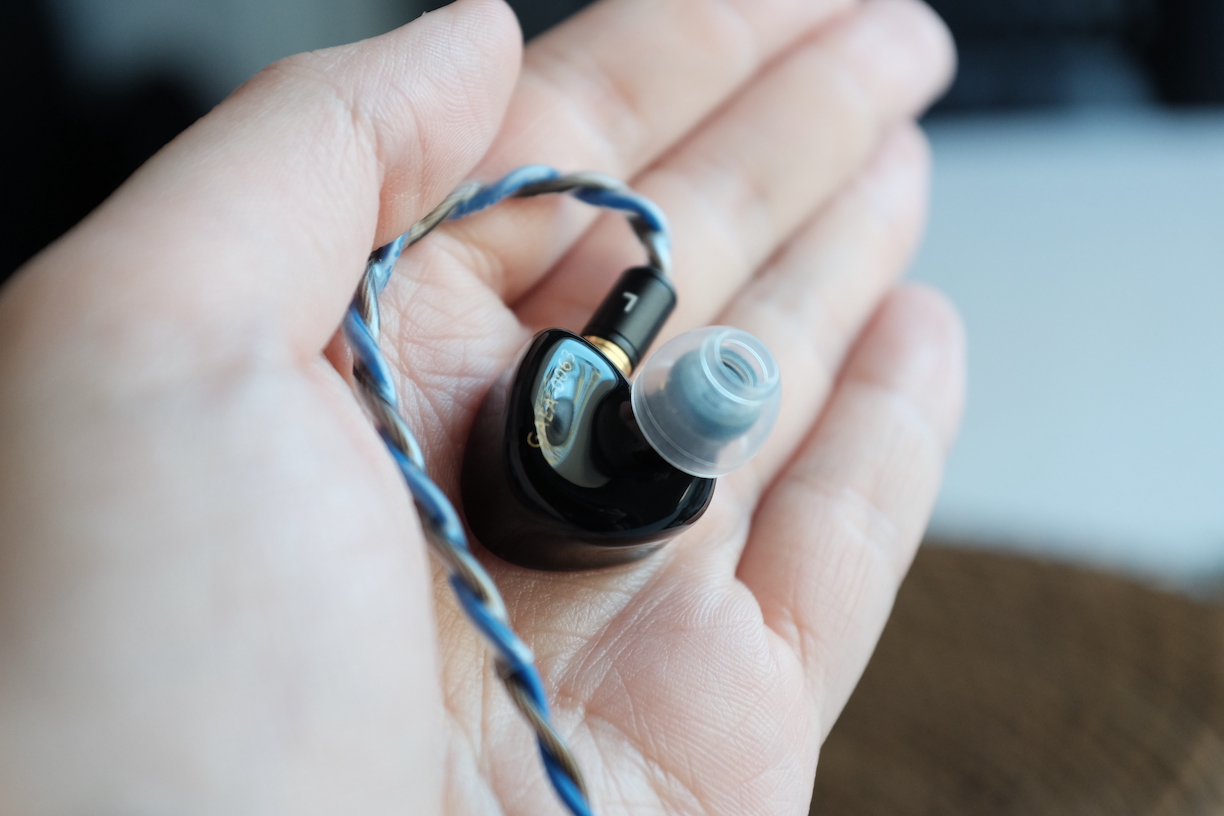
The nozzles are as large as the Moondrop Blessing 2 but shorter. Gaea seems to favour a shallow to medium fit rather than a deep fit like Blessing 2. The Gaea would fit shallower if you use larger tips, and you might hear some extra treble peaks. Using small tips to fit the Gaea deeper can remove these peaks.
Since Effect Audio is a cable maker, let’s discuss the stock cable.
From the visual perspective, the cable is a win. This is the first time I have seen a cable made especially for an IEM. The same stabilised wood is used for the wire splitter and the plug. The colour of the wires complements the colour of the faceplates. The size of the cable also matches the size of the earpieces. The cohesiveness of the visual presentation is just satisfying.
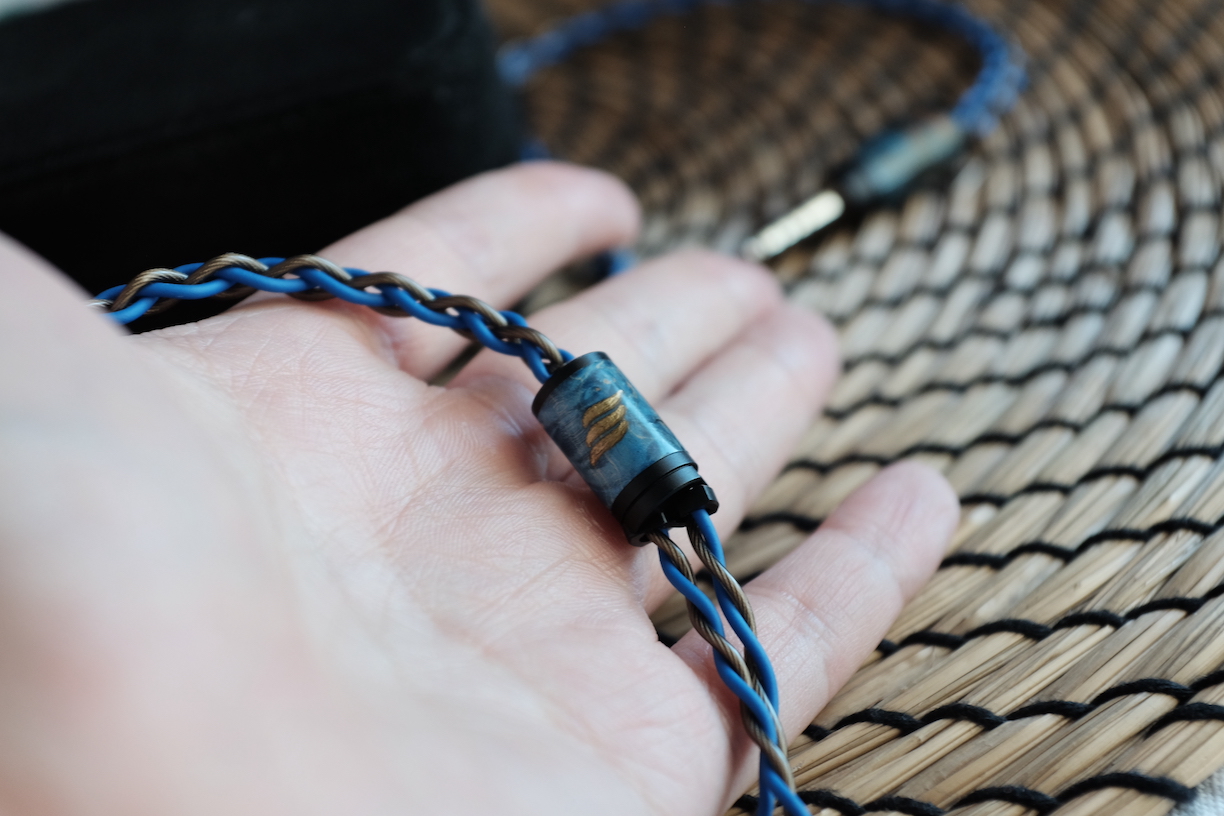
From a usability point of view, I’m disappointed. The cable is too stiff and refuses to cooperate during photo shoot, making the whole session a chore. It refuses to wrap properly, even with roadie wrap technique. It bends in unexpected ways, like having its own mind. At least it does not hold memory like the ALO cable that comes with Andromeda 2020, but I have cables from XINHS that behave better.
How it sounds
Sources for listening tests:
- Fiio K7 (for all A/B tests)
- Shanling M6 Ultra
- Hidizs S9 Pro
Local FLAC files ripped from CDs or bought from Qobuz were used for most casual listening and A/B tests. My playlist for A/B tests can be found on Apple Music here.
Spinfit W1 tips were used for all listening tests.
Tonality and Timbre: 4/5 - Good
Frequency response of Gaea against Monarch MkII. Measurements were done with an IEC-711-compliant coupler and might only be compared with other measurements from this same coupler. Visit my graph database for more comparisons.
Tonality or “tuning” is where objectivity and subjectivity meet. Objectivity exists in the squiggly lines above, called Frequency Response (FR) graphs. They are created by sweeping a signal from 20Hz to 20kHz and measuring the corresponding loudness coming from an IEM. Unless a human operator deliberately tampers with the microphone or the data, FR does not care about the price or prestige of an IEM and, therefore, is “objective.”
However, human listeners are not microphones. Our ears and brain interpret the sound and decide whether it is “enjoyable.” It is also beneficial to remember that when you play a note on a musical instrument, multiple sounds (fundamental and harmonic) appear simultaneously and mix together. Achieving a life-like balance between frequencies and adding a tasteful amount of imbalance (“colouring the sound”) is the hallmark of an excellent tonality.
Gaea’s tonality can be described as bright and vibrant but balanced against bass and treble air. But before we move on, look at that channel matching!
First, let’s talk about vibrancy. Some IEMs and headphones have a “flat” presentation where most instruments and vocals in the mix seem to be at the same level, with little contrast between instruments and between different times in the music. Other IEMs sound like rollercoasters or a photo with a saturation tuning up. Gaea belongs to the latter rather than the former. This characteristic can be seen from the graph with the 10dB difference between the midrange (500Hz) and both the bass and the upper midrange.
Secondly, let’s talk about the most controversial aspect of Gaea, its brightness. To my ears, all instruments and vocals sound brighter than how they usually sound. For example, Bach’s Chaconne performance by Itzhak Perlman sounds brighter and lacks a bit of body and warmth that I expect from the Strad (I think?) used in the recording. Ed Sheeran’s vocals in all albums sound slightly brighter with less body and weight. Other commercial music shares the same situation. However, the brightness rarely reaches the point where vocals and instruments sound odd unless you do back-to-back A/B tests against other IEMs. I would say Gaea pushes the upper limit of “natural”.
Whilst a bright signature is questionable, the execution of that signature has a finesse that, IMHO, deserves some praise. Simply put, Gaea is bright but not peaky, edgy, or sibilance (beyond what is already in the music). Usually, when an IEM is tuned “bright”, it has treble peaks at 3kHz, 5kHz, 8kHz, and possibly 12kHz. Between these treble peaks are valleys. The result is that some sounds would be randomly boosted like ice picks to the ears, whilst other high-frequency details would be masked. The results can be “sparkly” but generally “sibilance”, “peaky”, “edgy”, and ultimately fatiguing.
Not with Gaea. The boost is smooth and evenly from 1.5kHz to 5kHz, with a strategic dip at 6kHz to control sibilance. In fact, the raw graph of Gaea looks as smooth as a smoothened graph from other IEMs. To me, it’s the hallmark of skill and has some implications for the perceived technical performance of these IEMs.
Thirdly, let’s talk about Gaea’s bass. For some reason, I had a precognition that Gaea has no bass. I was wrong. The amount of bass of Gaea is perfectly balanced against its midrange, meaning the drums and the bass wouldn’t overpower the rest of the band. They do not disappear behind the singer either. The bass boost is clean and does not invade the midrange.
The bass shelf itself is also tuned with a balance between punch (midbass, around 125Hz) and rumble (“true” or sub-bass, below 60Hz). Gaea has a nimble but substantial “BOOM” when rendering bass drops, but it also has a physical rumble. The rumble does not overpower the bass response and reduces the impression of bass punches like Monarch II. At the same time, the bass is not “all punch, no rumble,” like some old-school mid-bass-focused IEMs and headphones. The texture of Gaea’s bass is also quite adequate.
Finally, the “air”. Gaea is an airy, open-feeling IEM with a large soundstage. What does it mean? For example, when I listen to the Bach Cello Suite No.1 recorded in a nice hall, I can effortlessly hear the reverb of the cellos against the hall before fading into nothingness. This lovely effect benefits everything, from classical recordings to overly-produced commercial music.
How did Elysian Acoustic Labs achieve that? Look at that beautiful 10kHz dip followed by the 15kHz peak. If you are familiar with 64 Audio TIA’s treble, you already know the sense of space and micro details this 15kHz peak provides. (Knowles’ research confirms the benefit of such a 15kHz peak, but whether you trust their research is another story).
Conclusion: it’s hard to rank the tonality of Gaea. On the one hand, the brightness can lead to discomfort and unnatural tonality, which are 3/5 at most. On the other hand, the brightness (and the rest of the frequency response) is well done, with a singular focus toward a vision: bright, clear, detailed, and vibrant. Such finesse is 5/5 material. So, I decided to take the average of two perspectives: 4/5 - Good.
Retuning / EQ suggestions: Here is how I would retune the Gaea to remove the oddness but maintain its vibrant character. It’s actually straightforward and can be done with a simple 10-band graphical EQ:
- The uncanny and tinny feeling is due to the imbalance between the 500Hz and the 1.5kHz region, so you either boost 500Hz or drop the 1.5khz. To my ears, the 500Hz is perfectly fine, but the 1.5kHz is 3dB too high. The problem can be fixed by lowering the 1.5-2kHz region by around 3dB.
- The harshness of Gaea is due to too much energy around 4-5kHz. I found that a 3dB cut at 4kHz does the job.
- Interesting observation: the upper midrange of Gaea after EQ looks identical to Monarch II, but 2dB higher across the board for that vibrancy that Monarch might lack to some listeners.
Resolution, Detail, Separation: 5/5 - Excellent

Resolution is a fascinating subject due to the difficulty of pinning down what it really is. To me, “resolution” can be separated into “macro” and “micro” levels. The “macro resolution” is synonymous with instrument separation. In general, if note attacks are very crisp and precise, musical instruments in a song would be distinctive even when they overlap on the soundstage. The “micro resolution” dictates how many details you can hear at the note tails. Many IEMs are good at macro- but mediocre at micro-resolution. A few are vice versa.
Whether you look at separation or detail retrieval, Gaea’s resolution belongs to the top echelon. Let’s take One Winged Angel, performed by the Game Music Collective, as an example. When I swapped Gaea to Blessing 2, the gatekeeper of the “good” (4/5) resolution, I immediately noticed a slight reduction in instrument separation and the clarity and definition of individual instruments. The choir was hit the hardest. B2 has less separation and definition of individual voices, making the choir more blobby and less defined than Gaea. Here, I should highlight that Blessing 2 is already a resolving IEM that sounds crisp and detailed. The differences are highlighted due to A/B tests.
The Dragonborn Comes by Swedish Radio Symphony Orchestra and Sabina Zweiacker gives the same impression. Everything is more well-defined, separated, and less “blanketed” with Gaea.
The beautiful Paganini Caprice 24 performed by Daniel Lozakovich highlights the gap between Gaea and the Blessing (by the way, where has the time gone? The last time I found Daniel Lozakovich on YouTube, he was a child prodigy. Now he is a young man). The violin sounds harsher on Blessing 2 due to its 3kHz focus. At the same time, Gaea reveals many more nuances, such as the slight touch of the other strings and the scratch of the bow against the strings. The airy ambience and reverb of the room are rendered so much clearer on Gaea as well. Even when I increase the volume of Blessing 2 to give it an advantage (“louder is better”), it just cannot catch up to the Gaea.
The resolution advantage of Gaea stems from both the implementation of its BA drivers and its tuning. Gaea’s bright tuning has a “shock and awe” factor. At all time, the IEM always act like, “HEY! LISTEN! LISTEN TO THIS ONE! RIGHT HERE! DO YOU HEAR THIS DETAIL? RIGHT HERE!” It’s also completely devoid of warmth and mud in the lower midrange that gets in the way of details.
That said, I don’t think Gaea is the best regarding the actual resolution. For instance, after Gaea’s initial shock and awe wore off, I realised that anything Gaea can reveal, my plain old and muffled/muddy Andromeda 2020 can, too. In A/B tests, it is clear that Gaea suffers against the big guns, like U12T and Monarch II. We will talk more in the comparison section.
Still, Gaea’s resolution is still up there with the bests. 5/5 - Excellent.
Percussion Rendering: 4/5 - Good
Percussion rendering reflects how well the tuning and technical performance of an IEM work together to recreate realistic sound of a drum set. Good drum hits have a crisp attack (controlled by frequencies from 4kHz to 6kHz), full body (midbass frequencies around 200Hz), and physical sensation (sub-bass frequencies around 50Hz). Good technical performance (“fast” driver) ensures that bass notes can be loud yet detailed. IEMs that cannot control bass very well tend to reduce the bass’ loudness to prevent muddiness.
Gaea’s bass and percussion rendering are better than my initial expectation.
As mentioned above, Gaea’s bass quantity is balanced against the rest of the spectrum. These IEMs do not feel bass light unless you are used to IEMs with more bass than midrange, such as the U12T. And at no point, the bass intrudes into the midrange.
The bass quality is also better than expected. Gaea is tuned for high-quality bass that feels snappy with quick attacks, medium to short decay, and a good sense of rumble. This is not the “all rumble, no punch” bass like Monarch II. It is also not the “all midbass and no rumble” like some old-school bass-boosted IEM. For instance, the bass drops 1:25 of despacito is oh-so-satisfying. The bass hits “WHAM!” immediately with no “hesitation”, unlike the Monarch giving more rumble than punches. At the same time, there is texture and a sense of rumble on the decay end of the bass drop, unlike the Blessing 2.
The details and separation within the bass region are pretty good. I can easily distinguish the kicks from the bass guitar in Eye of the Tiger (anyone still listens to this song? I looked it up to see what the fuzz is about, and now I can’t stop repeating. Send help).
The texture of the bass is also decent. For instance, the lower strings of cellos sound like “brrrrm” rather than “umm umm.” The lack of warmth might make cellos sound dry, but I still enjoy listening to Bach Cello Suites with Gaea.
I’m not saying that Gaea’s bass is perfect, though. The biggest problem, to me, is that Gaea’s bass is not the show’s star. It’s not big. It’s not bold, and it’s not super dynamic. It’s just … there, doing the job adequately and efficiently.
At the other end of the spectrum, hi-hats and cymbals are very prominent in the mix with decent detail. However, I find cymbal crashes to be a bit too splashy. Pulling the treble energy down a touch can help.
Taken as a whole, I say bass and percussion rendering of Gaea fall squarely in the “good” level - 4/5.
Stereo Imaging (Soundstage): 5/5 - Excellent

Stereo imaging or “soundstage” is a psychoacoustic illusion that different recording elements appear at various locations inside and around your head. Your brain creates based on the cues in the recording, which are enhanced or diminished by your IEMs, DAC, and amplifier. Some IEMs present a wide but flat soundstage. Some present a “3D” soundstage with layering, depth, and height. In rare cases, with some specific songs, some IEMs can trick you into thinking that the sound comes from the environment (a.k.a., “holographic”)
Gaea’s soundstage is a highlight of its performance, even in the context of kilo-buck IEMs. Due to the treble extension, Gaea has the uncanny ability to trick you into thinking that the sound comes from around you, especially if you are outside in an open environment. For instance, when I left my office and turned on the music with Gaea the first time, I had to check whether I connected the cable correctly. For a moment, I was pretty sure that the music came from the outside world. Such a “holographic” effect depends on the music and your surrounding environment, but it is there.
A unique aspect of Gaea’s sound is how it mimics a two-channel speaker system. Simply put, most IEMs place the centre of the soundstage (where vocals and main instruments locate) right inside my head or slightly in front of it. If an IEM has a “3D” soundstage, it distributes the rest of the music in a ball of sound around the centre with depth, layering, and even height. With an excellent treble extension, IEMs can fling the far-most layer of the soundstage into the physical world, creating the “holography” effect I mentioned above.
Gaea takes that whole ball of sound and pushes it a few steps away from me. With the right track, it feels like I’m listening to my speakers in front of me. This sense of distance resembles the Final Audio A8000 and the 64 Audio Trio. At the same time, Gaea can perfectly place vocals and instruments very close to my ears, such as the whispers in Bad Guy by Billie Eilish.
The placement of sound within the soundstage is, of course, precise, with a clear sense of direction and distance. I had a good experience watching movie video clips and playing games via Topping G5 with Gaea. ASMR videos, especially the ones with 3DIO microphones, sound surreal.
Conclusion: 5/5 - Excellent.
Source Pairing
Gaea is not as annoying as Andromeda 2020 when it comes to pairing. Even with balanced output, I did not hear hiss across my dongles, DAP, and desktop setup.
Most of my listening was done with Shanling M6 Ultra, Topping G5, and FiiO K7. I did not have a good experience with the BTR5 and the Hidizs AP80 Pro X. These devices kill Gaea’s sense of depth and treble details, making it flat and lifeless.
I couldn’t try the Apple dongle as the sample comes with a 4.4mm cable, and I don’t want to detach the cable unnecessarily and wear out the connectors. Still, I recommend a proper battery-powered DAC/amp (e.g., Topping G5) or a full-sized DAP when investing in a high-end IEM like Gaea.
Some Comparisons
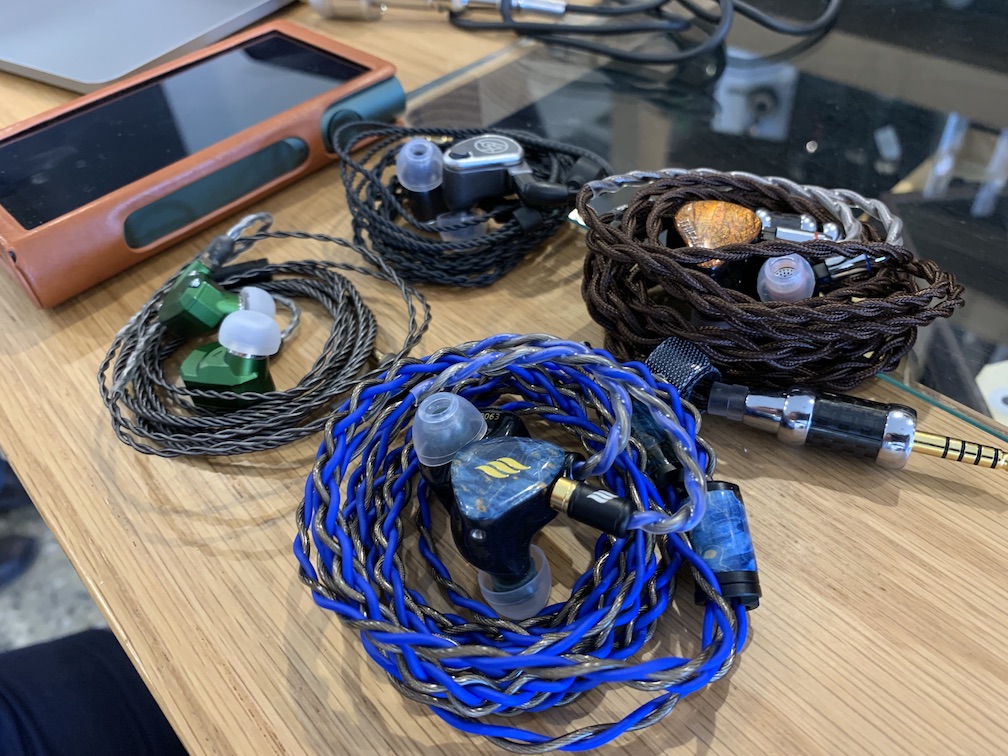
In this section, I compare Gaea with Monarch Mk II and U12T. You can use my ranking list to compare Gaea with others. Due to how I rank IEMs, if two IEMs score the same, they perform more or less similarly.
G.O.A.T. by Polyphia:
- Gaea is much more sizzling and harsh compared to Monarch Mk II. On the other hand, Gaea has a larger soundstage than Monarch, where instruments spread out further away from each other. Drum hits are also snappier on Gaea, even though Monarch rumbles more.
- U12T slams much harder than Gaea. Every note is more well-defined on U12T, even though the U12T is not as bright as Gaea. The sense of air and nuances around instruments is also higher on U12T than on Gaea.
Dragonborn (Skyrim main theme):
- Monarch rumbles way more than Gaea, though each drum hit feels less snappy. Vocals and chants have more body and weight on Monarch compared to Gaea. However, Gaea has a larger and more 3D soundstage than Monarch.
- U12T makes Gaea sound tinny and weak as if the entire lower part of the spectrum is lost. The sub-bass rumble is more robust and noticeable on U12T throughout the tracks. However, the vocal chants sound like they are located further away on Gaea than on U12T.

Despacito:
- Gaea is more sizzling than Monarch. Back-to-back A/B tests also reveal a metallic tint in the vocal tonality on Gaea that I usually don’t notice. The Monarch is slightly more detailed than Gaea. Monarch rumbles more, but Gaea has snappier and more satisfying punches.
- U12T sounds fuller across the spectrum compared to Gaea. Music notes are more well-defined on U12T without extreme brightness.
Presto movement of Summer Concerto:
- Gaea sounds larger and more spread out than the Monarch. However, instruments are more separated and micro details of the strings come through clearly with the Monarch.
- Gaea pulls the whole orchestrate one step back from me compared to U12T. However, the U12T sounds crisper and more micro-detailed.
Flute Partita in A Minor, 4th movement:
- Monarch sounds fuller and reveals more micro details than Gaea. For instance, you can hear nuances beyond the notes, such as the flute’s pads and keys and the sound of breath within the tube.
- U12T sounds fuller and more detailed than Gaea without the excessive brightness.
Conclusion
You don’t need a multi-kilo-buck IEM to enjoy music at an “audiophile” level. This statement is truer with every new release from talented and dedicated Chi-Fi companies working at the lower end of the market. IEMs like EAxEA Gaea are squarely luxurious products where some constraints are sacrificed to make something exceptional, where breakthrough happens. In the case of Gaea, you exchange the usual demand of a perfectly balanced midrange for a bright and vibrant sound that pushes the boundary of “natural” sound. Whilst I don’t believe that Gaea has achieved an unheard level of technical performance, I do believe that it has pushed the 1 + 4 driver topology to its limit. Suppose you are after a luxurious IEM with solid technical performance, bright signature and snappy bass response. In that case, EAxEA Gaea should be on your radar.
